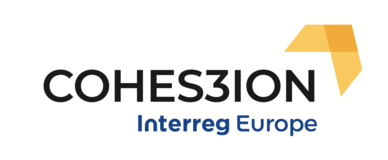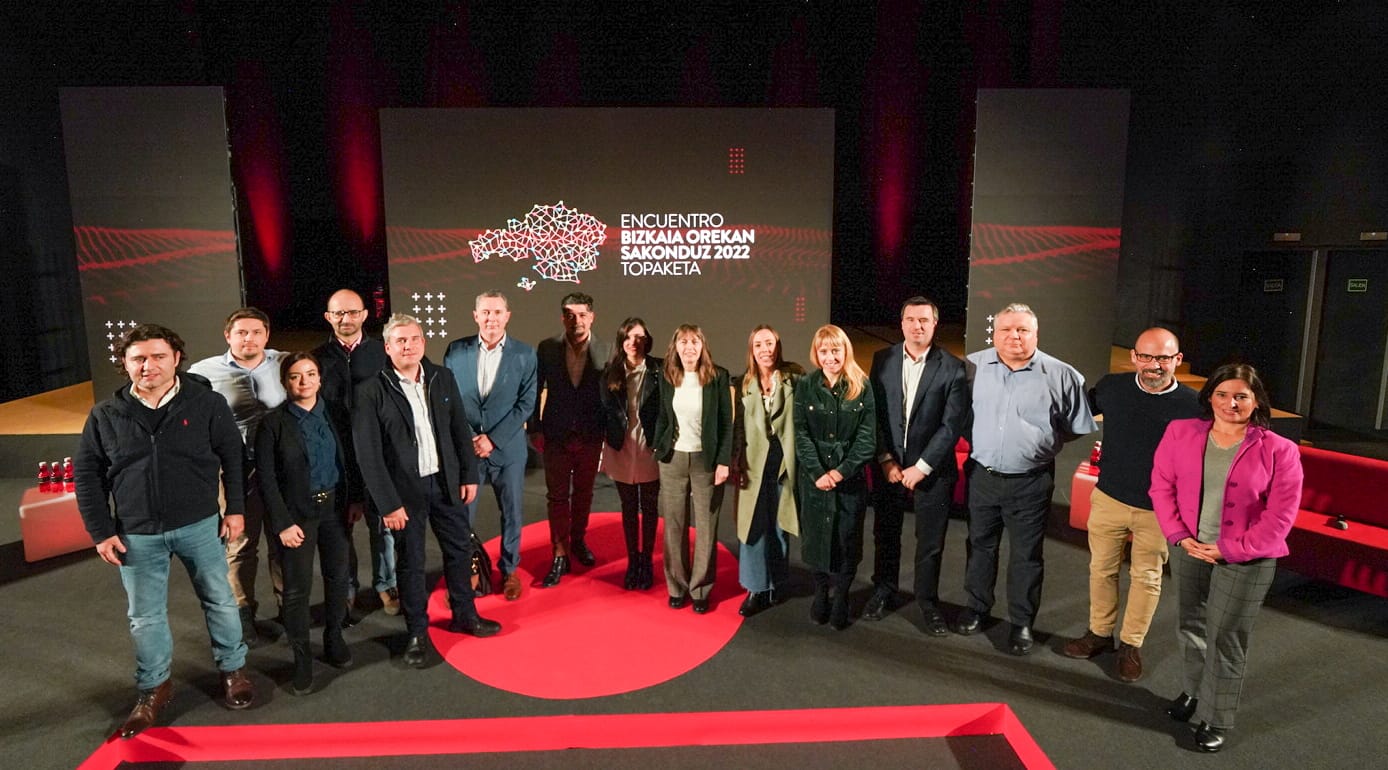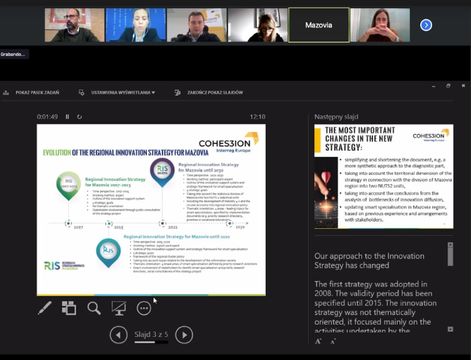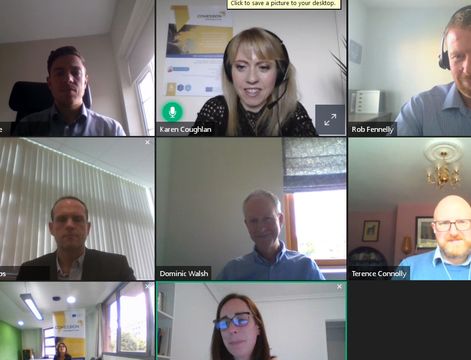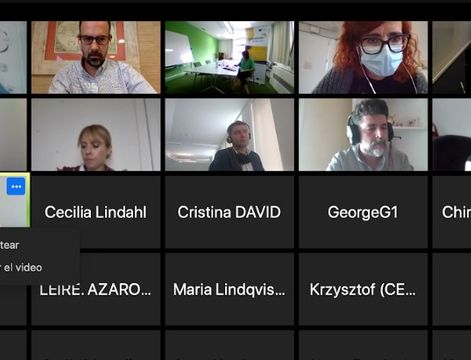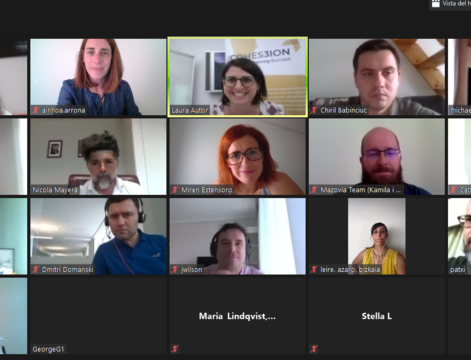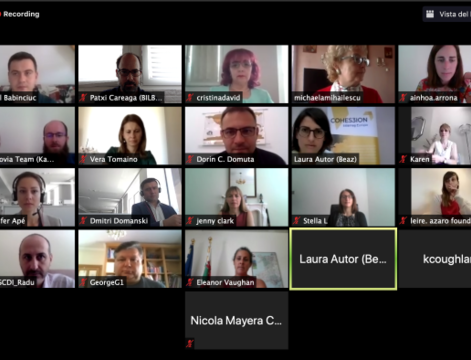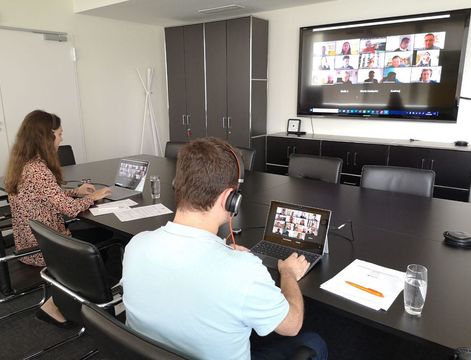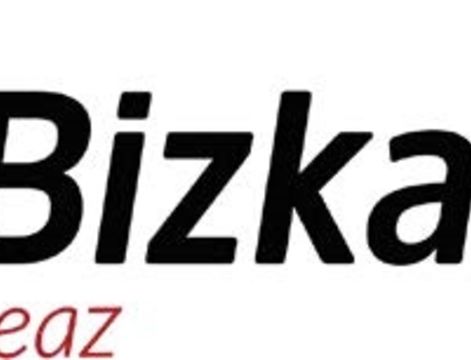On November 26, the Cohes3ion project partners took part in another study visit - this time in Mazovia. The event was aimed at exchanging experiences among regions based on good practices and an analysis of the management model of the regional smart specialization strategy (RIS3 - Research and Innovation Strategy for Smart Specialization).
The meeting was started by Ms. Małgorzata Białczak, head of the Department of Development and Management of the Regional Innovation Strategy at the Office of the Marshal of the Mazowieckie Voivodeship in Warsaw. Mrs. Białczak presented key information about the Regional Innovation Strategy for Mazovia. The strategy defines a framework for the regional innovation ecosystem, which aims to create an environment conducive to innovative activity of enterprises. A draft of the updated strategy for the coming years is co-created with the stakeholders. Great emphasis was placed on developing implementation issues, e.g. giving more importance to the territorial approach..
The presentation of good practices was started by Mr. Krzysztof Mieszkowski from the Centre for Advanced Materials and Technologies CEZAMAT. The Centre is a network of five laboratories open to cooperation between scientists, students and entrepreneurs from innovative industries. CEZAMAT connects R&D infrastructure with regional and (inter)national innovation ecosystems. Research is conducted in such areas as: Internet of Things (IoT), terahertz technologies, miniaturization, photonics, space techniques, modern therapies and materials for diagnostic and therapeutic purposes, bio-chemical and bio-medical engineering, drug design and development, as well as energy storage and conversion. In addition to implementing projects and research, the mission of this organization is also to support innovative start-ups. CEZAMAT is also an innovative center that provides professional services for business, which is a good example of cooperation among research units.
In the following presentation Mr. Piotr Dylewski, on behalf of the Marshal's Office, introduced working groups for smart specialization of the Mazowieckie Voivodeship as an example of bottom-up influence (the so-called entrepreneurial discovery process) of entrepreneurs, business environment institutions and scientific units on regional innovation policy instruments and targeting support from public funds for research and development activities of enterprises. There are four working groups in Mazovia, one for each area of smart specialisation, i.e. safe food, intelligent management systems, modern business services and high quality of life. One of the results of the working groups’ activity was development of priority research directions (research agendas), which allowed for thematically targeting funds for R&D activities, coming from the Regional Operational Program of the Mazowieckie Voivodeship 2014-2020.
The good practice session was ended by Ms. Małgorzata Kucińska on behalf of the Capital City of Warsaw with a presentation of the Integrated Territorial Investments of the Warsaw Metropolis (ITI). It is an example of cooperation of 40 public administration units, i.e. urban, urban-rural and rural communes, concentrated around a strong urban center. The ITI practice has provided numerous evidence that the above-mentioned areas can develop together and drive development at local level. The close cooperation of communes has led to the creation of a unique bond between these units on such a scale. Thanks to the implementation of this instrument, integration has deepened and competition between municipalities has decreased.
After discussing good practices, Ms. Kamila Milewska, on behalf of the Marshal’s Office, chaired a peer review session, consisting in the project partners' assessment of the presented experiences from Mazovia. In order to feel a substitute for normality in these difficult times, the workshop was conducted on an interactive internet platform. Using the virtual ‘sticky notes’, the participants wrote down the strengths and weaknesses of good practices, which then were addressed by the representatives of the institutions at the end of the session.
